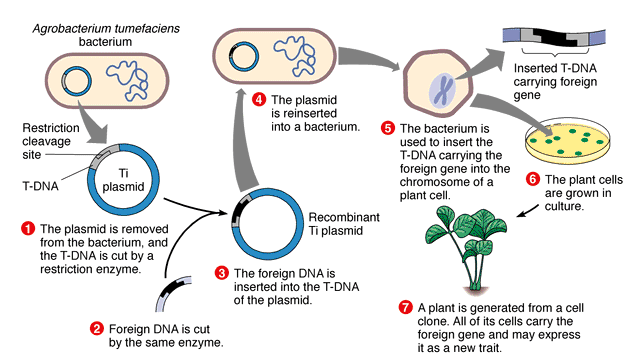Genetically Modified Organisms (GMOs): Understanding the Science, Applications, and Controversies
What are Genetically Modified Organisms (GMOs)?
Genetically modified organisms (GMOs) are living organisms whose genetic material (DNA) has been artificially manipulated through genetic engineering techniques. This process involves the introduction of specific genes from one organism into the genome of another, often from a different species, to confer desired traits or characteristics.

Techniques Used in Genetic Modification
Several techniques are employed in the creation of GMOs:
- Recombinant DNA Technology: This involves the use of restriction enzymes to cut and splice DNA segments from different organisms, which are then combined to create a new, recombinant DNA molecule. This recombinant DNA is then inserted into the host organism's genome.
- Gene Guns: This method uses high-pressure gas to propel microscopic particles coated with the desired genetic material into the cells of the target organism. The introduced DNA then integrates into the host's genome.
- Bacterial Transformation: In this technique, the desired gene is inserted into a bacterial plasmid, which is then introduced into the host organism's cells. The bacteria act as a vector to transfer the genetic material into the target organism.
Applications of GMOs
GMOs have found applications in various fields, including agriculture, medicine, and research:
Agriculture
GMOs are widely used in agriculture to create crops with enhanced traits, such as:
- Resistance to pests, diseases, and herbicides
- Improved nutritional content (e.g., increased vitamin A in golden rice)
- Tolerance to environmental stresses like drought or salinity
- Longer shelf life and delayed ripening
Medicine
GMOs have various applications in medicine, including:
- Production of recombinant proteins and drugs (e.g., insulin, human growth hormone)
- Development of genetically engineered vaccines
- Creation of animal models for studying human diseases
- Gene therapy for treating genetic disorders
Research
GMOs are valuable tools in scientific research, enabling studies on:
- Gene function and regulation
- Protein structure and function
- Mechanisms of disease development and progression
- Development of new biotechnological applications
Controversies Surrounding GMOs
Despite their potential benefits, GMOs have been the subject of various controversies and public concerns:
Environmental Impact
Concerns have been raised about the potential ecological consequences of releasing GMOs into the environment, such as:
- Gene flow from GM crops to wild relatives, potentially creating invasive species
- Adverse effects on non-target organisms, such as beneficial insects
- Development of resistance in target pests or weeds
- Reduced biodiversity due to the dominance of GM crops
Food Safety
Some people are concerned about the safety of consuming GM foods, citing potential risks like:
- Allergenicity or toxicity of GM foods
- Unintended changes in nutritional content
- Horizontal gene transfer from GM foods to human gut bacteria
However, extensive scientific research and regulatory oversight have not found any significant health risks associated with approved GM foods.
Socioeconomic Issues
GMOs have also been the subject of socioeconomic debates, including:
- Corporate control over the food supply and seed patents
- Dependence of farmers on large biotechnology companies
- Potential impact on traditional farming practices and livelihoods
- Labeling and consumer choice regarding GM foods
Regulation and Labeling of GMOs
Due to the controversies surrounding GMOs, many countries have implemented regulations and labeling requirements for GM products:
- Regulatory agencies, such as the FDA and EFSA, assess the safety of GM foods before their commercialization
- Some countries, like the European Union, require mandatory labeling of GM foods
- Other countries, such as the United States, have voluntary labeling policies
- International agreements, like the Cartagena Protocol on Biosafety, aim to ensure the safe handling and transboundary movement of GMOs
The Future of GMOs
As the world faces challenges like climate change, population growth, and food security, GMOs are likely to play an increasingly important role in addressing these issues. Future developments in GMO technology may include:
- Improved precision and efficiency of genetic engineering techniques, such as CRISPR-Cas9
- Development of GMOs with enhanced resilience to climate change and environmental stresses
- Creation of GM crops with increased nutritional value to combat malnutrition
- Expansion of GMO applications in medicine, such as personalized gene therapies and new vaccine platforms
However, the future of GMOs will also depend on public acceptance, regulatory frameworks, and ongoing scientific research to address the concerns and potential risks associated with this technology.
Further Reading
Critical Reviews in Food Science and Nutrition, The politics and science behind GMO acceptance
